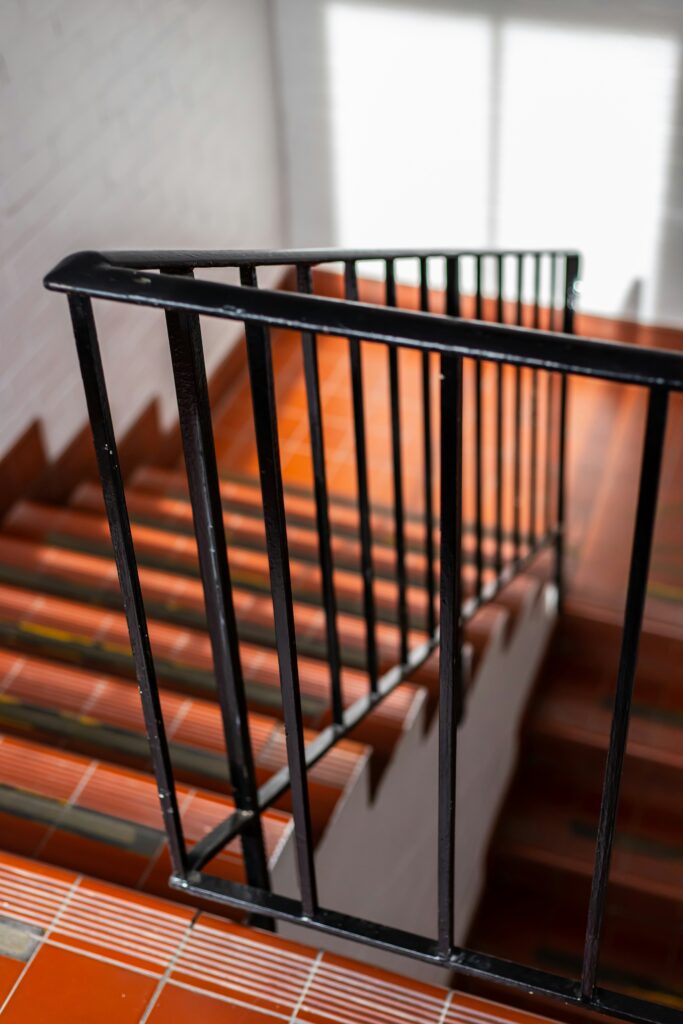
When it comes to baby-proofing your home, staircases are one of the first places parents focus on. A secure baby gate at the top and bottom of the stairs provides peace of mind and prevents dangerous accidents. However, not all staircases are built the same. Many homes today have unusual stairwells with uneven walls, angled banisters, open railings, or uniquely shaped landings that make installing a standard baby gate a real challenge.
If you’re struggling with finding the right baby gate solution for an unusual stairwell, you’re not alone. This blog will guide you through practical options, smart installation techniques, and creative solutions that ensure your little one stays safe while maintaining your home’s functionality and style.
Why Stairwells Are a Safety Priority
Children are naturally curious, and stairs can be an irresistible attraction. Unfortunately, falls on staircases are among the leading causes of injuries in toddlers. A well-placed baby gate prevents unsupervised stair access, creating a controlled environment where children can explore safely.
While straight staircases with parallel walls are simple to gate off, unusual stairwells require tailored solutions. These could include:
- Wide or extra-narrow openings
- Angled banisters or walls
- Spiral staircases
- Open-plan railings with no solid wall to anchor to
- Irregular landings or multiple entry points
Understanding these challenges is the first step in finding the right solution.
Features to Look For in a Baby Gate for Unusual Stairwells
Before diving into installation methods, here are the essential features that make a baby gate suitable for tricky staircases:
Adjustable Widths – Extendable gates that adapt to both narrow and wide spaces.
Angled Mounts – Special hardware that allows gates to be attached to banisters or walls at an angle.
Hardware-Mounted Design – Stronger and more reliable than pressure-mounted gates for stair use.
Banister Mount Kits – Useful when there is no wall to drill into.
Customizable Panels – Playard-style gates with interlocking panels that can be configured for unique spaces.
Baby Gate Solutions for Different Unusual Stairwell Designs
1. Angled Banisters and Walls
Many staircases, especially in older homes, feature banisters and walls that don’t line up perfectly. In such cases:
- Use angled-mounting kits that allow the gate hardware to rotate and fit snugly against uneven surfaces.
- Opt for gates like the Cardinal Gates Stairway Special, which include optional angle brackets.
2. Open Railings with No Solid Wall
If your stairwell has railings instead of a wall, you may not want to drill into the wood or metal. The solution is:
- Banister-to-banister mounting kits, which use straps or clamps to secure the gate to banisters without damaging them.
- Alternatively, consider a freestanding baby gate system that creates a barrier around the stair entrance without direct wall attachments.
3. Spiral Staircases
Spiral staircases are notoriously difficult to gate because of their round, narrow design. Options include:
- Using a curved playard-style gate that wraps around the base of the stairs.
- Creating a “barrier zone” several feet away from the spiral entry point with an extra-wide configurable gate.
4. Wide Stair Openings
Some homes have extra-wide stair entrances that exceed the width of standard gates. Solutions include:
- Expandable baby gates that can stretch up to 72 inches or more.
- Modular panel gates that can be connected to cover the exact width required.
5. Multiple Stair Access Points
Certain landings have two or more entryways, making one gate insufficient. In this case:
- Use a multi-panel gate system to create a safe enclosure around the entire stairwell.
- Configure panels to form a protective “fence” that blocks all access points simultaneously.
Installation Tips for Maximum Safety
Regardless of the stairwell type, proper installation is key. Here are expert tips:
- Always choose hardware-mounted gates for staircases, especially at the top. Pressure-mounted gates are less stable and can be pushed over.
- Measure twice before purchasing. Take precise measurements of the opening, banisters, and angles.
- Protect your banisters. Use mounting kits with straps instead of screws to avoid permanent damage.
- Check for trip hazards. Choose gates with no bottom bar at the top of stairs to prevent tripping accidents.
- Test regularly. Children grow stronger quickly; ensure the gate remains secure and does not loosen over time.
Creative DIY Solutions for Tricky Staircases
If no commercial gate fits your unusual stairwell, you may need to get creative:
- Custom-built gates: A carpenter can create a gate tailored to your exact space.
- Playard conversions: Repurpose a foldable playard into a stair gate enclosure.
- Temporary partitions: For short-term solutions, use furniture or room dividers, though these are less secure.
Balancing Safety and Home Aesthetics
While safety comes first, parents also care about how baby-proofing affects their home décor. Fortunately, today’s baby gates come in sleek designs and materials like wood, steel, or clear acrylic, blending seamlessly into modern interiors. Custom finishes and neutral tones make it easier to balance style with safety.
When to Remove the Baby Gate
Baby gates are a temporary solution. As your child grows and learns to climb, the gate may become less effective and even hazardous. Experts suggest removing baby gates around age 2–3, depending on your child’s height, coordination, and stair safety awareness.
Final Thoughts
Unusual stairwells may present a challenge, but with the right baby gate solution, you can make your home both safe and stylish. Whether you’re dealing with angled banisters, wide openings, or spiral staircases, there are products and installation methods designed to fit your needs. Remember:
- Always prioritize hardware-mounted gates for stairs.
- Use specialized kits for banisters and angled walls.
- Consider configurable panel systems for irregular layouts.
By carefully planning and choosing the right baby gate, you’ll protect your little one from falls and gain peace of mind knowing that your unique stairwell is no longer a safety hazard.


